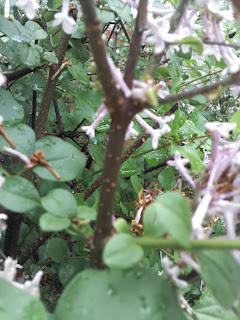Scientific Name: Pinus Strobus
- The Weeping White Pine is an evergreen
- Its branches are long and irregularly twisted
- Native to eastern North America
- The needle-like leaves are in bundles of five
- Its narrow cones have a rounded apex
- Every 3 to 5 years, the Weeping White Pine experiences a peak in cone production
- Can easily live 200 to 250 years
- Prefer moist climates and well-drained soil
- Conifer
- Reaches heights of 80 to 110 feet
http://www.ces.ncsu.edu/depts/hort/consumer/factsheets/trees-new/pinus_strobus-pend.html
http://en.wikipedia.org/wiki/Pinus_strobus
http://www.rook.org/earl/bwca/nature/trees/pinusstrob.html







































